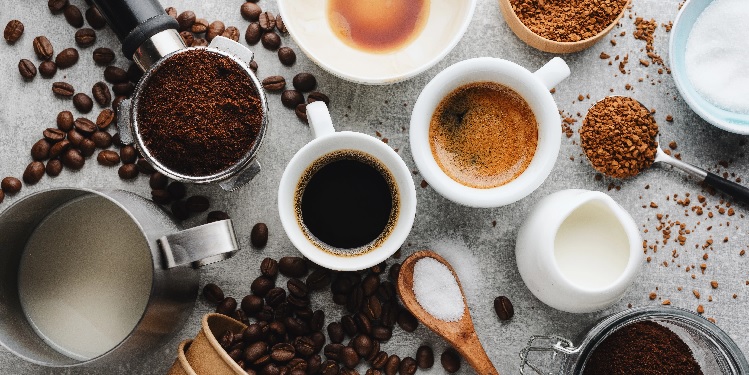Coffee has come a long way in recent years. Once restricted to the same dark roast blend available everywhere, coffee drinkers can now explore an entire world of varieties of beans and flavors right from their own home or local café. From light, fruity Colombian brews to rich Indonesian blends and specialty espresso shots, something is exciting for everyone when it comes to exploring coffee’s diversity.
In this article, we will take a closer look at the different types of coffee available, how they are produced and brewed differently, and tips on how novice drinkers can start learning about new kinds of coffees they may have never imagined.
Table of Contents
Introducing Coffee Varieties From Around the World
Coffee is a beverage that millions of people around the world have enjoyed for centuries. However, many different varieties of coffee are found in other regions of the world, each with its unique taste and aroma. From the rich, fruity Ethiopian Yirgacheffe to the full-bodied Colombian Supremo, coffee lovers have many choices regarding their preferred flavor.
The world’s coffee industry has continued to develop, with different regions producing distinct-tasting beans, each with its unique growing climate and cultivation methods. As the global demand for coffee grows, exploring the diverse range of coffee varieties worldwide provides a unique opportunity to experience different flavors. With coffee variety packs and specialty roasters becoming more accessible, it is easier than ever to discover new coffee experiences.
Exploring the Origins of Coffee and its History
Coffee beans are grown in countries within the geographical boundaries known as the Coffee Belt, between the Tropics of Cancer and Capricorn. This region has a unique climate with ideal conditions for growing coffee, including warm temperatures, high humidity, and rich soil. Some of the world’s top coffee-producing countries include Brazil, Colombia, Ethiopia, Indonesia, and Vietnam.
The history of coffee dates back to the 9th century, when it is believed to have originated in Ethiopia. According to legend, a goat herder named Kaldi discovered the energizing effects of coffee after his goats ate the beans from a coffee plant and became more lively. From there, coffee spread throughout the Arabian Peninsula and eventually made its way to Europe and the rest of the world.
Understanding How Different Coffee Varieties Taste, Smell, and Look
Different coffee varieties produce beans with unique characteristics, resulting in a diverse range of flavors, aromas, and appearances. For instance, Ethiopian Yirgacheffe has a light body with floral notes and a fruity aroma, while Indonesian Sumatra Mandheling has a heavier body with earthy and smoky undertones.
Several factors, including growing conditions, processing methods, and roasting techniques, determine coffee’s overall flavor profile. Lighter roasted beans tend to have more complex and delicate flavors, while darker roasts are bolder with a stronger taste.
Regarding appearance, coffee beans can vary in size, shape, and color depending on the variety. For example, African varieties like Ethiopian Sidamo are known for their long and slender shape, while Brazilian Santos beans are typically larger and rounder.
Uncovering the Different Roasting Profiles and their Benefits
Roasting is a crucial step in the coffee production process, as it brings out each bean variety’s unique flavors and aromas. The duration and temperature of roasting determine the level of roast, which can range from light to dark. Each level offers its benefits and characteristics, making it essential for coffee drinkers to understand their preferences.
Lighter roasts are typically roasted for a shorter time at lower temperatures, resulting in a milder and more complex flavor profile. On the other hand, darker roasts are usually roasted at higher temperatures for a more extended period, resulting in a bolder and stronger taste.
Grinding Your Beans for Optimal Flavor Extraction
To truly experience the diverse flavors of coffee, it is recommended to grind your beans fresh before brewing. Grinding releases the oils and aromas in the beans, resulting in a more flavorful cup of coffee.
The coarseness of the grind also plays a role in flavor extraction. Finely ground coffee is typically used for espresso, while coarse grinds are better suited for French press or pour-over methods. Experimenting with different grind sizes can help you achieve your desired taste and strength.
Brewing Tips for Making Perfect Cup Every Time
Brewing the perfect cup of coffee is an art that requires attention to detail and patience. It is an experience that can transport you to a place of pure enjoyment and fulfillment. To achieve this level of perfection, there are a few tips you may find helpful. Start with freshly roasted coffee beans and grind them before brewing to ensure maximum flavor.
Use filtered water and the right temperature, typically 195-205°F, for optimal flavor extraction. Measure your coffee and water quantities accurately, and use a timer to time the brewing process. Finally, invest in quality equipment, like a burr grinder and a pour-over kettle. You can consistently achieve the perfect cup of coffee by following these tips.
Enjoying the Benefits of a Diverse Range of Coffees at Home
With the vast variety of coffees available, finding a type that suits your preferences is easy. You can explore and try different varieties from around the world in the comfort of your own home. Coffee is out there whether you prefer a light, floral cup or a bold, smoky one.
In addition to its delicious taste and aroma, coffee offers numerous health benefits. It contains antioxidants and essential nutrients that can improve cognitive function, boost energy levels, and help prevent certain diseases.
